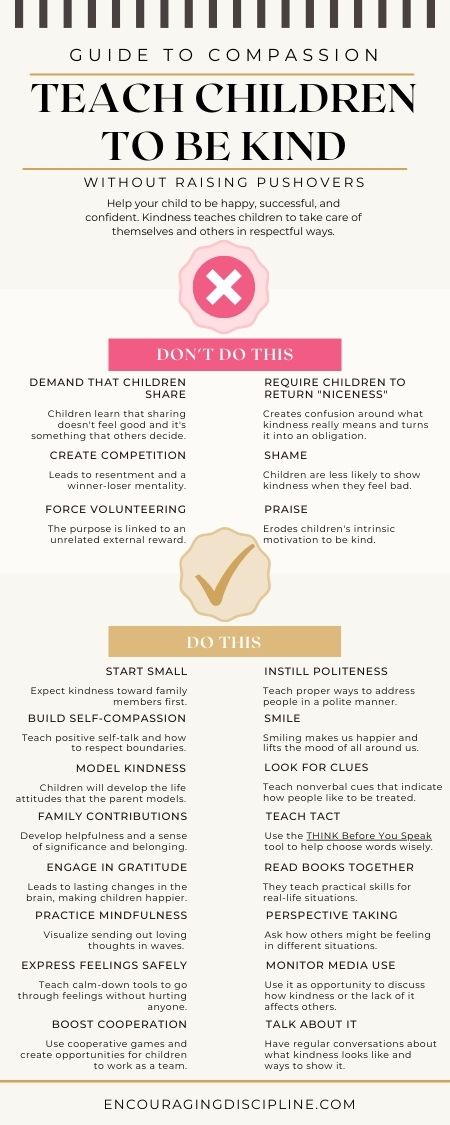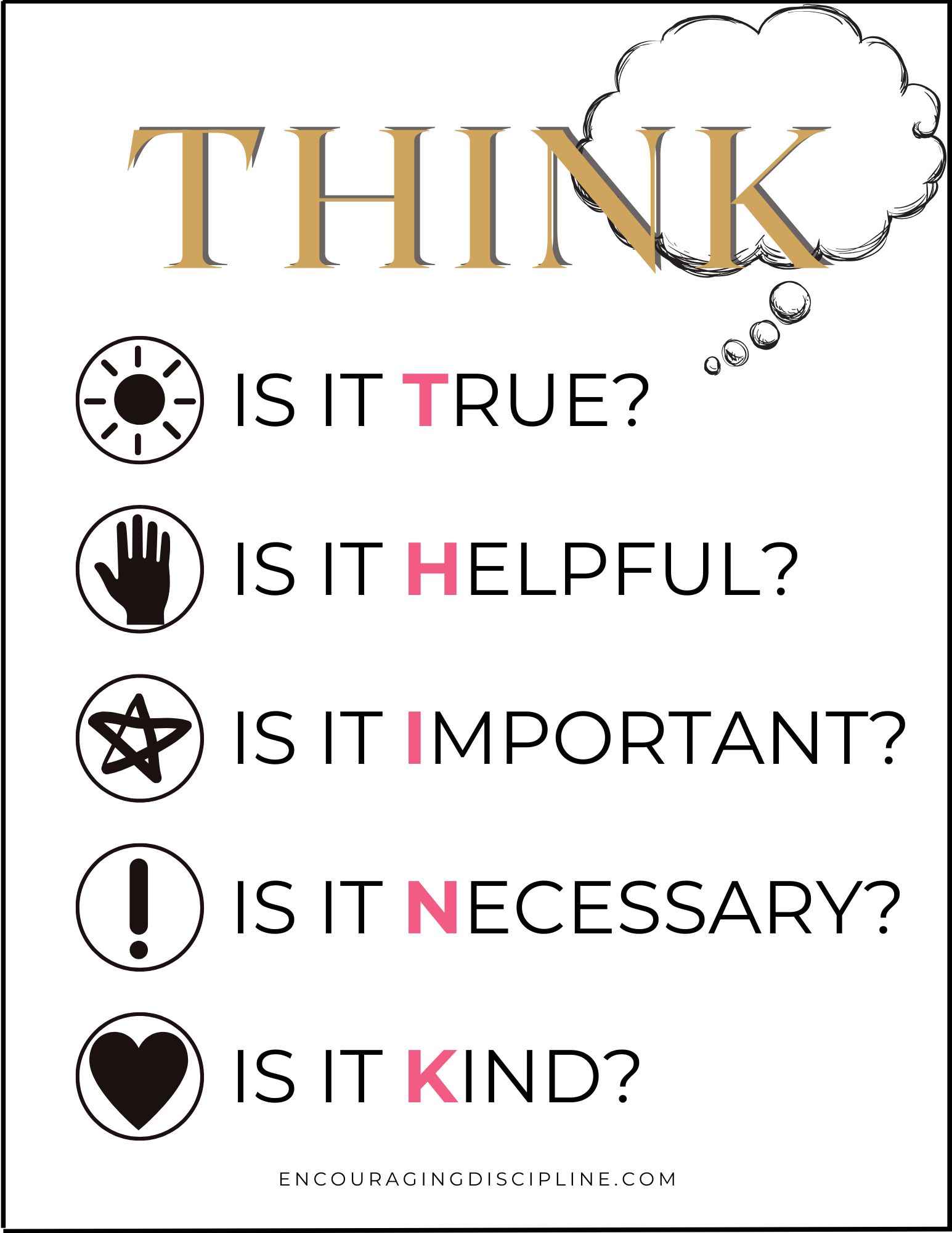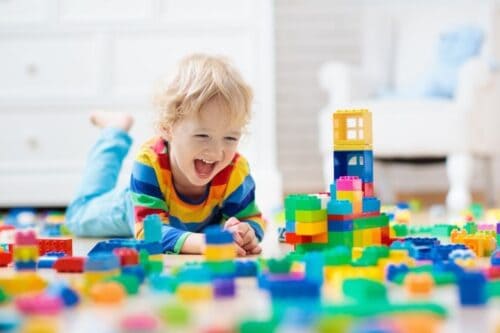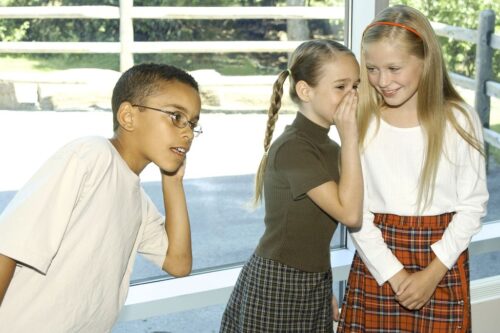16 Ways to Teach Children to Be Kind
Kindness is acting out of consideration for others, feeling empathy, gratitude, and the courage to act on those feelings. We are born feeling empathy. Kindness is taking action on that empathy. We must take advantage of children’s innate empathy and teach them how to show kindness in meaningful ways. Here are 16 ways to teach children to be kind and how to avoid turning them into people-pleasers.
Table of Contents
Why Should We Want Children to Be Kind?
Studies have found a decline in empathy among college students in recent years. At the same time, soft skills are considered the main predictor of success in school, career, and life. Among those soft skills are showing empathy toward others and having insights into other people’s values and points of view. Therefore it is critical that we teach children to act kindly toward others from a young age.
Most Parents Want Their Children to Be Kind
When I ask parents to make a list of characteristics that they want their children to have as adults, they never talk about grades, degrees, and sports achievements. All parents want their children to be happy, well-adjusted adults, caring, kind, responsible and respectful.
So how do we get there? And what gets in the way?
Where Do We Start?
One thing to keep in mind is that children are born good. They are born wired to be empathetic and to want to help. In fact, there are studies that show that babies as young as 6 months show empathy for others. So there is no question that empathy is there. The next step is learning how to act on that empathy. In other words, acting with kindness.
We are social animals and we do best in groups. Therefore it is important for children to learn how to behave in a group and to have skills that help them become successful members of our society. They have to know to share, get along, help, support others, and also to ask for help, and rely on others. Kindness helps to create a social group with strong bonds and a sense of safety.
Parental Attitudes Matter
So what happens along the way? How do kids get to college and seemingly lose that empathy? Well, there are a lot of factors at play. But I will focus here on our role, as parents, because that’s one thing that’s in our control.
Here’s an example.
Recent studies tell us that children perceive grades and achievements as more important than being kind to others. This perception comes from parents’ attitudes. We tend to put a lot of emphasis on our children’s grades and achievements, mainly because we recognize there is a direct link between college acceptance rate and those achievements. As a result, children conclude that those are the most important in life.
While good grades and higher education may lead to a higher paycheck, they do not guarantee a happier life and a more successful career. And when we emphasize personal success, kindness seems to suffer. Harmful behaviors, such as cruelty, disrespect, and cheating, seem more acceptable to our children.
If we want children to learn that kindness is important, then we need to show them that’s what we care about.
Being Kind, Not a Pushover
One important point that I want to make is separating kindness from people-pleasing.
Showing kindness comes from empathy. Pleasing comes from fear.
IS THIS KINDNESS?
Kindness should always make us feel good inside.
How does it feel in my body?
When taught to pay too much attention to making others feel good indiscriminately, or worrying about what other people think or feel, without taking into account their own needs, children learn to enter dysfunctional relationships. We should never teach children to tolerate unwanted behaviors, to be afraid to voice their own feelings, or put other people’s needs before their own. Such messages create unhealthy beliefs about oneself and others.
What we should teach children is that kindness should make us feel good inside. If our gesture is accompanied by any uncomfortable feelings, then that is not kindness.
Also, kindness doesn’t mean we have to get along with everyone. We don’t have to like everyone, and not everyone has to like us.
Sometimes kindness may seem like a fine line to walk. So the way I navigate this is by keeping “nice” and “kind” separate. They do not mean the same thing, therefore they should not be used interchangeably. Stay away from “nice” and focus on being kind instead.

Here Is What DOESN’T Teach Children to Be Kind
1. Demanding that children share
When we force children to share, they learn that sharing feels bad. It also builds resentment, since the decision to share is not intrinsic, and children don’t feel a sense of control over it.
2. Creating competition
Avoid competition among siblings. If you tell your children, “Let’s see who can get dressed the fastest” may get you faster out the door. But it creates unhealthy competition between siblings and excludes kindness. Instead, ask them to work together to get something done.
3. Forcing children to do community service
I feel like a good intention turned awfully wrong when we began requiring children to do so many hours of community work. It feels like a punishment or a chore. Instead, we should do it with them and show them how it brings us joy when we help others. Talk to children about how good it feels to help and to make a difference in someone’s life.
4. Making it an obligation
If you consistently tell your child to do something “nice” in return for what someone else did, you are not teaching him to be kind. Instead, he learns to do “nice” things out of obligation and guilt. This creates resentment and goes against building a natural intrinsic motivation to act kindly because it simply feels good to do so. It creates negative feelings around kindness and your child will be less likely to be kind toward others if he feels pressure around it.
5. Shaming
You’ve been working hard at teaching your children to be kind and they don’t demonstrate it. Oftentimes we tend to focus on what children do wrong and correct them. When your children act in an unkind way, avoid scolding, criticizing, shaming, or being reproachful.
Instead, try noticing them being good and acknowledge it. Point out how it made the other person feel and leave it there. “Thanks for offering to help”, “Your brother smiled when you shared your Legos with him. I think he was happy.”
6. Praise
When you notice your child being kind to others, don’t focus on how the action makes you feel. Sure, you may be feeling happy and proud. But putting the focus on you takes away from the child’s experience. Instead, you can observe it matter-of-factly, and state simply what your child did and how the other person felt as a result.
How to Teach Children to Be Kind
1. Start small
Begin by teaching your children to show kindness in the family. Encourage children to be kind to siblings and other family members. Some of the values and rules that you could have in your family may be:
- Use kind words
- No hitting
- Keep your promise
- Offer to help
- Clean up after yourself
- Greet with your full attention
- Learn the proper ways to address people based on age, rank, and familiarity level.
These skills can then be practiced with friends, classmates, and the larger community.
2. Being kind to yourself
One of the most basic elements in the kindness puzzle is teaching children to be kind to themselves. I feel like oftentimes this important piece is left out. We cannot give to others what we don’t give to ourselves.
Teaching children to be kind to themselves is a multifaceted approach. It involves modeling, being kind to ourselves as parents, and also treating our children with kindness and respect. At the same time, we have to teach children to speak kindly to and about themselves, and to respect themselves and their things.
Here are some examples:
- Not ridiculing themselves or allowing others to make fun of them just to please their friends
- When someone is being mean to them, tell that person to stop and ask for help
- Requiring others to respect their boundaries
- When they make a mistake, they can ask helpful questions instead of berating themselves: “What am I learning from this?”, “I can’t do this yet, I have to keep practicing”, “I made a mistake, how can I repair this?”
Remind your child that they are good and deserve to be treated kindly and with respect.
3. Model for your child
Your child will not learn behaviors that you simply talk about and require, without offering a real-life example. It would be like the difference between reading about how to make a souffle and learning how to make it from a chef. There is a greater chance that your souffle will come out right if an experienced chef shows you how to make it.
Model for your children the attitudes you want them to develop.
Don’t try to be perfect, instead admit when you make a mistake and you wish you had done things differently.
4. Family contributions
All children should learn to contribute to the family. In this way, they learn they have an important role in the family. They also learn to have a helpful attitude and to treat other family members with kindness.
In order to encourage children to become motivated contributors to the family, here are some things you should avoid doing.
- Don’t pay or reward your child for doing daily chores around the house, that are expected of everyone. Such contributions may include helping to set the table, picking up his toys, putting his dishes in the sink or laundry in the basket, and so on. A simple acknowledgment or thank you will suffice.
- Avoid complaining about having to do different activities around the house, even if you truly find them tedious. Some examples are doing the laundry, cooking, or emptying the dishwasher. Children pick up on our energy and learn to internalize our voice and attitude toward working for the family.
Instead, emphasize the importance of contributing to the family and talk about what each member does to contribute.
Related: Should We Pay Kids for Doing Chores?
5. Practice gratitude
Numerous studies have demonstrated the benefits of giving thanks. Gratitude seems to have lasting effects on the brain, making us happier and less prone to anxiety and depression. Children learn through repetition and practice and they also need to see us expressing appreciation and gratitude.
Ways to express gratitude:
- Write thank-you notes
- Thank someone in your mind
- If you feel grateful for what someone did, make sure to tell them
- Tell the person who cooked dinner you appreciate their meal
- At bedtime or in the morning, think of the people and things you are grateful for.
6. Mindfulness
Do mindfulness exercises and send kind and loving thoughts to all people in the family, the community, then the whole city, the whole country, and finally to the whole world and the universe. Ask your child to visualize with you these loving thoughts going out like waves that roll gently over each group, extending farther and farther away, as you name them.
7. Teach safe ways to express feelings
It is important for children to learn how to go through anger, frustration, and other uncomfortable feelings, without hurting those around them. You can teach them how to take space or ask for support until the feeling wears off.
Related: Picture Books for Helping Kids With Anger
All feelings are important to be recognized and managed safely. Teaching children self-regulation skills is a long process, but one that will help them increase their emotional intelligence. Emotionally intelligent children know how to respond kindly to others, in appropriate ways.
Related: Teach Kids Effective Calm-Down Tools
8. Encourage cooperation
Play cooperative games to encourage children to collaborate and promote kindness and teamwork. Here are some suggestions for cooperative games.
Also create opportunities for siblings to work together toward a common goal, rather than against each other.
9. Be polite
Teach children to use polite words, such as “please”, “thank you”, and “excuse me”, and proper greeting phrases.
10. Practice smiling
Your brain doesn’t know the difference between a real and a fake smile. If you force yourself to smile, you will feel a tingling sensation in your heart, extending through your chest, and then going through your entire body, to your fingertips. It is a simple way to fill yourself with positive energy. Practice smiling with your child. It fills you up with kindness that just wants to be expressed.
11. Teach children to look for clues
Facial expressions and other nonverbal cues indicate if other people like how they are being treated.
Children are not very good at reading subtle facial expressions. They tend to be absorbed by their own feelings and they miss the subtle signs that tell them how others are feeling.
Guide them to look at the other child or person for clues to find out how they would like to be treated. Make comments and let your child process the information: “You pushed your brother, but he is not laughing.” “You love this game, but look at your brother’s face. Does he look like he is enjoying it too?”
Another good tip to teach children is that if one of them is laughing and having fun, but the other one starts crying, screaming, or trying to run away, then that’s not a good game for everyone and it has to stop.
12. Teach tact
Children tend to be frank about what they think and feel. And when they tell a friend or sibling they don’t like the picture they drew or the gift they received, those words can be hurtful. Most of the time children don’t want to hurt others, but they also don’t realize how their words can affect a relationship.
To teach children to choose their words wisely, you can use a tool that many teachers use in their classrooms. Ask children to THINK before they speak. Each letter in the word THINK is a reminder to ask oneself:
- T – Is what am I about to say True?
- H – Is it Helpful to the other person?
- I – Is it Important?
- N – Is it Necessary for me to say it?
- K – And is it Kind?
If you teach your child to ask herself these questions, she can learn to filter her thoughts before they roll out of her mouth.
If you would like your own THINK poster to use with your child, you can get it in your inbox right now by joining the Printable Library.

As a rule of thumb, if a friend is not asking for an opinion, then do not give it. The friend will most likely be offended by negative comments that she did not request. And if your child finds it hard to say something positive, it is better to not say anything at all.
EXAMPLES
☛ Your child doesn’t like the present he got for his birthday. Instead of telling the person who brought the gift what he thinks, he can just acknowledge the gesture and say, “Thank you for the present. It was very nice of you.” Or, “Thank you for thinking about me.” Anything along those lines will put the emphasis on the giver’s thoughtfulness rather than how your child is feeling about the gift.
☛ If your child’s friend asks her what she thinks of her drawing, teach your child to praise her friend’s effort, by saying something like this: “I can tell you put a lot of work in creating that drawing. You must be so proud!” Or, “You used a lot of cool colors.” It is always a good idea to focus attention on the person asking the question.
☛ If your child doesn’t like the food her friend is eating next to her at lunchtime at school, then, well, … teach her to just keep her thoughts to herself.
13. Learn from books
Books are wonderful resources that can teach children useful and practical skills for real-life situations. You can find books that teach children how to approach and include the new kid in class, how to stand up to a bully, and how to help a classmate who spills grape juice over her new dress. Most books show how the characters are feeling, helping your child to have a glimpse into other children’s worlds.
Children have limited life experience and an underdeveloped frontal lobe, so we cannot expect them to simply know what others are feeling or thinking. This is information that they need to learn and knowledge that needs to be built.
Related: 8 Reasons Why You Should Read Aloud to Your Child
14. Perspective taking
The first step in understanding how other people are feeling is to be aware of one’s own feelings.
Ask your child how he is feeling when someone is kind to him. Similarly, talk about how he is feeling when someone is unkind to him. Then follow up with an invitation to figure out how someone else is feeling in a given situation. When children are able to understand someone else’s perspective, they can build healthy, successful relationships.
EXAMPLES
☛ Here are some questions you can ask your child: “What would that feel like? or “What do you think this person or character is feeling?”
☛ You can practice these questions when reading books, watching cartoons, seeing a scene at the store, or when your child tells you about something that happened at school.
15. Monitor media consumption
Be aware of the media that your child watches and limit shows that glamorize unkind behaviors. Also, discuss what you are seeing and help your child to understand that being unkind to others is not appreciated in the real world.
Talk with your child about examples of kind and unkind acts that they hear about or see in the news, on TV, or around you. Without judging other people, simply discuss the impact of people’s actions on others and how they could do things differently. Then bring it to a personal level and think of specific examples from your child’s own life, when their action affected those around them.
16. Talk about it
Last but not least, have explicit discussions with your child about what kindness looks like and what it is not.
Make a list of things that are hurtful and unkind. Your child may suggest pushing, grabbing something out of someone’s hand, name-calling, or excluding someone.
Then make another list of ways to show kindness to others. Here you could include sharing, including, comforting, helping, offering support, compromising, listening, standing up for a friend, and so on.
Refer to the list when you talk about kindness and keep adding to it as your child’s life experiences expand.
Ways to Show Kindness
- Standing up for what you believe is right
- Speaking the truth in a respectful and firm manner, even if some people may not like it
- Setting boundaries in a respectful and firm manner
- Respecting other people’s boundaries
- Taking care of yourself.
Other Ways to Show Kindness
- Your child can make cards for teachers instead of you buying and writing cards for them
- Let your child pick out the gift for his friend’s birthday (you can give him a few choices)
- Write thank-you notes together
- Call family members to keep in touch
- Check on elderly family members or friends
- Involve the child when making pantry donations for the school.
Be Patient
Kindness is a skill children learn over time with lots of modeling and practice.
Know that your child is good even when he doesn’t feel like sharing or helping. Sometimes it is hard to be kind to someone who just hurt their feelings.
With growing rates of anxiety and depression among children and teens, I think it is very important to teach children to be kind. Kind to themselves and kind to others.
We can’t make children behave better by making them feel bad. If you make your child feel bad, he is less likely to want to show kindness toward others.
What is your favorite way to teach children to be kind? Share in the comments below.







